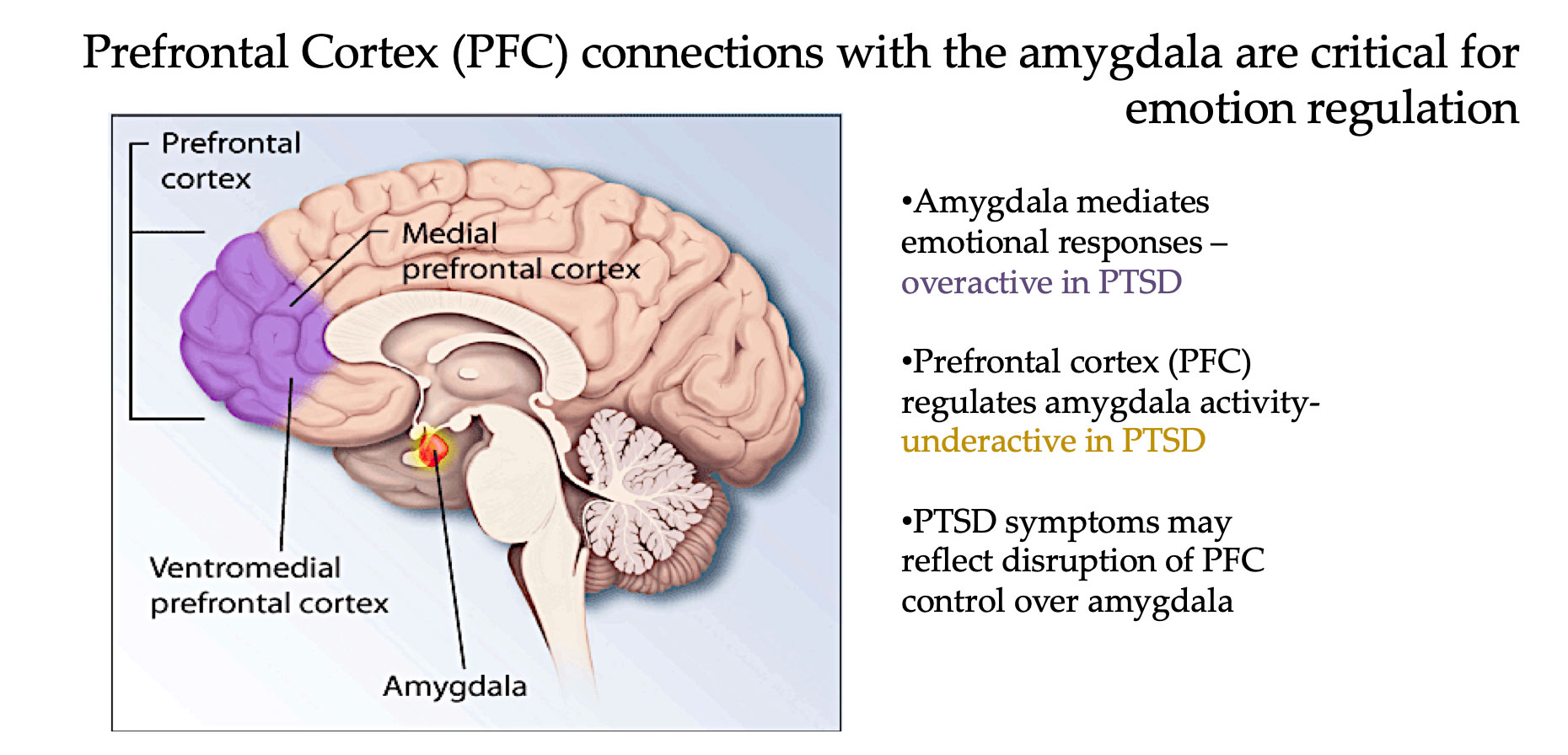By Zara Houshmand
 Rebecca Shansky
Rebecca ShanskyEvery experience we have changes the structure and function of our brain, even if only on a microscopic level. This ability to adapt, to learn and remember new things in response to the world around us—to reshape ourselves with every encounter—is called neuroplasticity. Dr. Rebecca Shansky’s lab studies these experience-based changes at the level of individual neurons.
Do animals experience something like ubuntu? Shansky pointed to studies showing that rats feel empathy and help each other when they see another rat in distress.
In particular, she looks at how trauma affects the connections between the prefrontal cortex and the amygdala that regulate emotion. The amygdala is one of our oldest evolutionary structures, and is similar in humans and other species. It is involved in strong emotions such as fear, and triggers rapid responses in life-threatening situations. The prefrontal cortex, which is more highly developed in humans than other species, can regulate the amygdala’s activity—it helps determine whether our fear is justified, or whether we can safely ignore it and go on with our day.
But trauma can disrupt the connections between the prefrontal cortex and the amygdala. People with PTSD show more activation than normal in the amygdala, and less activity in the prefrontal cortex. Looking at the brains of rats, where the amygdala functions much as it does in humans, stress causes some of the neurons of the prefrontal cortex to shrink and become rigid, weakening their potential to make the connections that control the amygdala. The balance shifts to favor basic survival. That may be good for a rodent in the wild, but the loss of emotional regulation is problematic for a human.

Slide image © Rebecca Shansky
Almost all of these studies were originally conducted in male animals only, but Shansky discovered that females have different ways of adapting to stress. Where male rats typically freeze in fear, some female rats instead will dart around the cage. And those same female rats turn out to be more resilient: they show more cognitive flexibility and are less fearful later. Shansky’s lab is now working to decipher the biological mechanisms behind these sex-specific responses. Hopefully, this will lead to new ways of treating stress-related mental illnesses like PTSD and major depressive disorder, which are twice as common in women.
DISCUSSION
The discussion following Dr. Shansky’s presentation focused first on a more detailed exploration of the rat studies, and their implications for human behavior. Shansky explained that some types of rodents are genetically more vulnerable to depression, and some also show significant sex differences in response to stress. She had not studied the amygdala in this context, but greater activation of the prefrontal cortex seemed to protect against depression and to play an important role in resilience and emotional regulation.
Theo Sowa probed further about sex differences in the fear response, recalling that male rats froze while female rats darted around. She related this to her own experience of helping women survivors of armed conflict—they could not afford to freeze, but rather were in constant motion looking after their children and communities—and questioned what this might mean for resilience. Shansky offered that people who have more active responses to trauma tend to be more resilient and less at risk for PTSD than those who have feelings of helplessness or passive responses. In another experiment, the darting behavior of female rats trying to comfort companions who were stressed by a threatening tone in the laboratory seemed to be related to problem-solving. They first searched for the source of the tone before comforting their companion with grooming and snuggling.
An intriguing and relevant question was then raised: Do animals experience something resembling ubuntu? Shansky pointed to studies showing that rats feel empathy and help each other when they see another rat in distress—but only if it’s a rat they have lived with previously. Treating members of an in-group differently from outsiders is a very basic behavior, but it’s not innate. An albino rat won’t normally help a hooded rat in distress, but if the hooded rat is adopted and nursed with other baby albino rats, then it will be treated as a member of the in-group. This adaptability means that neuroplasticity is involved—empathy can be learned, even by rats.
Can these learned behaviors related to group identity be reversed or unlearned? Unlearning is difficult, but it is possible to create new memories and new associations that might be able to override the original. Is there a critical time period during development when identification with in-groups is established? Here too the prefrontal cortex plays a role: the critical period in both rodents and humans lasts through adolescence and into early adulthood, while the prefrontal cortex is still developing. Changing behaviors after that time is still possible but more difficult.
In an exchange between Shansky and Carsten de Dreu, the audience got a lively glimpse of how scientific intuition proceeds. With an eye toward enlisting the neurobiology for training purposes, De Dreu asked whether the neural circuitry that relates to rats’ decisions to help in-group members but not out-group is likely to be modulated by the amygdala—a more intuitive, automatic response even if learned—or by the prefrontal cortex as a more thoughtful, controlled, and conscious response. This has not yet been studied, but Shansky offered that rats given anti-depressants will not help either group, implying that helping requires a feeling of empathic distress. De Dreu noted that that likely indicated it was modulated by the amygdala. Uri Hasson added that a compassionate response can depend on not feeling others’ pain so intensely that the discomfort hinders response, and it might therefore involve a coordinated balancing between the amygdala and the prefrontal cortex.
Thupten Jinpa observed that a helping response seems to arise instinctively without regard for in-group or out-group: “We know from our own personal experience that when a total stranger is struck down by a car and is bleeding, we don’t stop to ask, ‘Is he from my own community? Does this man speak my language?’” Buddhism uses both emotional training—an opening of the heart to feel compassion and connection with others—as well as more cognitively based strategies that actively engage the imagination to promote empathy and compassion. Different strategies may be more effective for different temperaments.
Mhondoro Mandaza noted that we won’t find out whether rats experience ubuntu by studying them in cages; we need to observe them in their natural habitat. Shansky explained how the rats used in this research are bred to be genetically identical in order to isolate the factors under study, and have never lived in the wild. There are, however, other studies that involve observing social hierarchies in large communities of rats that take a different approach to research and may provide additional insights in this area.
